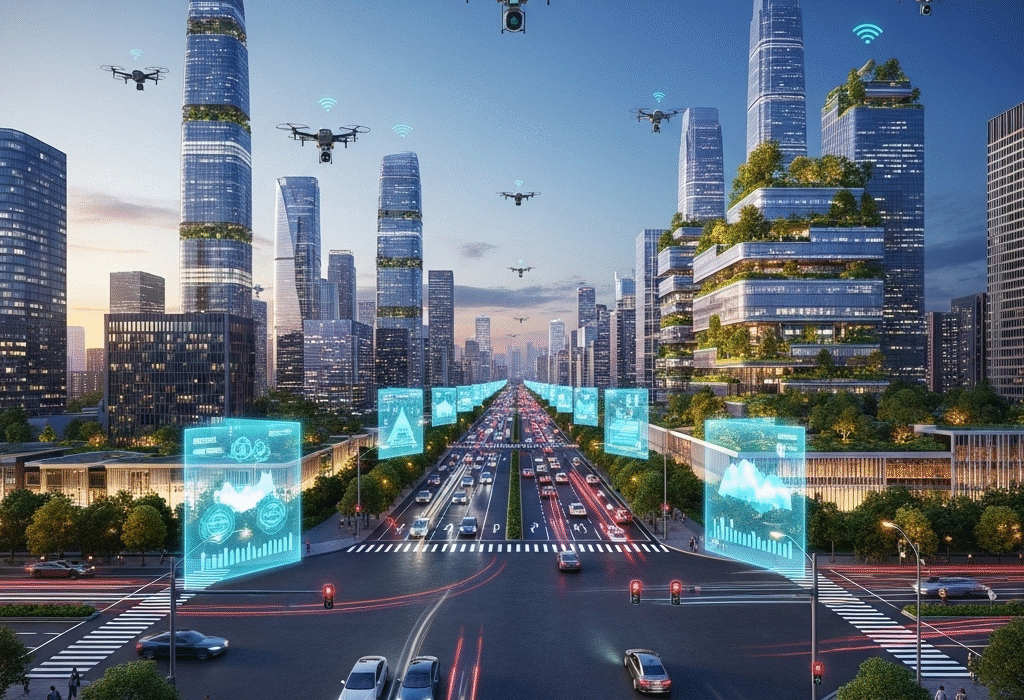Since the dawn of civilization, humans have gazed at the night sky and imagined walking on other worlds. Among all the celestial bodies in our solar system, Mars and Venus have captured the imagination more than any other. The red planet, with its dusty deserts, frozen poles, and hints of ancient rivers, promises a frontier for exploration and perhaps even settlement. Venus, shrouded in a thick, reflective atmosphere and baked by relentless heat, represents both a challenge and a mirror to our own planetary fragility. The concept of terraforming—altering a planet’s environment to make it habitable for humans—has long fueled science fiction. Yet today, the question is not only whether we dream it but whether we could achieve it, perhaps even within the next fifty years.
Terraforming is more than moving dirt or planting vegetation; it is a process of planetary engineering on a scale that dwarfs any human endeavor to date. It requires not only understanding a planet’s atmosphere, geology, and climate but also manipulating these systems in a controlled way. It is a test of imagination, technology, and patience, demanding that we confront questions about the limits of science and the consequences of human ambition. Could we transform Mars, the cold, dusty, thinly-atmosphered planet, or Venus, a world of sulfuric acid clouds and runaway greenhouse effects, into places where humans could live, breathe, and thrive?
The Red Challenge: Terraforming Mars
Mars has long been humanity’s favorite candidate for terraforming. Its days are similar in length to Earth’s, it has polar ice caps containing frozen water, and there are signs that liquid water once flowed across its surface. Yet the challenges are daunting. Mars is small and cold, with an average surface temperature of minus sixty degrees Celsius. Its atmosphere is 100 times thinner than Earth’s and composed mostly of carbon dioxide, with almost no oxygen to breathe. Radiation from the Sun, unmitigated by a protective magnetic field, bathes the surface in doses lethal to humans.
Despite these obstacles, scientists have proposed several methods for transforming Mars into a more habitable world. One approach is greenhouse warming: releasing gases such as perfluorocarbons into the atmosphere to trap heat and raise the surface temperature. This could, in theory, melt polar ice caps, release more carbon dioxide, and create a thicker atmosphere. Some scientists have imagined massive orbital mirrors reflecting sunlight onto the poles, further warming the surface. Others propose genetically engineered microbes that could survive in Martian soil, producing oxygen as they grow.
Even with these ideas, terraforming Mars on a fifty-year timescale seems improbable. Creating a breathable atmosphere would require a quantity of oxygen far beyond current technological capabilities. Estimates suggest that to raise Mars’s atmospheric pressure to Earth-like levels, humanity would need to release trillions of tons of gases, a logistical and energetic challenge unlike any we have attempted. Furthermore, Mars lacks a strong magnetic field, so any atmosphere we generate could be slowly stripped away by solar winds, meaning that maintaining habitability would be an ongoing struggle rather than a permanent solution.
Venus: The Planetary Furnace
While Mars appears as a cold desert awaiting human warmth, Venus presents the opposite extreme: a furnace of clouds and acid. Its surface temperature hovers around 465 degrees Celsius, hot enough to melt lead, and its atmospheric pressure is ninety times that of Earth’s. The clouds are composed of concentrated sulfuric acid, making the air corrosive and toxic. Yet Venus is not without appeal. Its mass and gravity are similar to Earth’s, and its day-night cycle, though slow, is predictable. If humanity could overcome the extreme conditions, Venus could provide a planet with surface gravity close to our own—a rarity in the solar system.
Terraforming Venus presents an entirely different set of challenges. Cooling the planet would be paramount. Some have imagined reflective shields in orbit, designed to reduce the amount of sunlight reaching the surface, thereby lowering temperatures. Others suggest chemical methods, such as sequestering carbon dioxide into solid compounds or floating giant platforms that could catalyze the breakdown of atmospheric gases. Floating cities in the upper atmosphere, where temperatures and pressures are more tolerable, could be a more immediate solution than surface habitation.
However, transforming Venus on a fifty-year timescale is arguably even more unlikely than Mars. The scale of energy required to remove or neutralize the planet’s thick carbon dioxide atmosphere is staggering. Moreover, the planet’s clouds of sulfuric acid would require advanced materials and chemical engineering far beyond what current technology can handle. The temptation to use Venus as a cautionary tale is strong: a planet so hostile that even the most advanced human ingenuity would struggle to bend it to our needs.
Technological and Ethical Hurdles
Beyond the physical obstacles, terraforming raises profound technological and ethical questions. The machinery needed to alter an entire planet would be unprecedented. Gigantic factories, energy sources dwarfing our current global consumption, and automated systems operating for decades without failure would be essential. Even assuming these technologies could be developed, the environmental consequences of large-scale planetary engineering are unknown. Could introducing greenhouse gases to Mars trigger unforeseen instabilities? Could partial terraforming efforts create dangerous conditions for future explorers?
Ethically, the questions are equally complex. Do humans have the right to alter other worlds, potentially destroying any indigenous life, microbial or otherwise? Would we be committing a form of planetary colonialism, imposing our vision of habitability on planets that have existed in equilibrium for billions of years? Some argue that our focus should be on preserving and restoring Earth rather than attempting to rewrite the conditions of other planets. Yet the allure of survival beyond our home world is powerful, particularly in an era of climate change and existential risk. Terraforming could be seen as a form of species insurance—a way to ensure that humanity endures even if Earth becomes increasingly inhospitable.
The Fifty-Year Question
Fifty years is a remarkably short time in the context of planetary evolution. Geological and atmospheric processes unfold over millions of years. While science fiction often compresses timelines for dramatic effect, reality imposes hard limits. Creating a breathable, Earth-like environment on Mars or Venus would require accelerating processes that normally take eons. Even the most optimistic projections suggest that a truly habitable surface on either planet would likely require centuries, not decades.
That said, partial terraforming or experimental habitability could be achievable within fifty years. On Mars, we might establish domed settlements, greenhouses, or small-scale atmospheric manipulation experiments. Oxygen could be produced locally, radiation shields deployed, and human presence maintained in controlled habitats. On Venus, floating colonies in the upper atmosphere could provide breathable environments with tolerable pressures and temperatures. These scenarios would not constitute full terraforming but could represent significant steps toward longer-term goals.
Technological innovation over the next five decades could also change the equation. Advances in nuclear fusion, materials science, artificial intelligence, and biotechnology may provide tools unimaginable today. Genetically engineered organisms could survive extreme temperatures, produce oxygen, or extract resources from local soils and rocks. Autonomous machines could perform large-scale construction, mining, or atmospheric manipulation without direct human intervention. While these possibilities are speculative, they underscore that terraforming is not a matter of if, but of capability, resources, and ambition.
The Role of International Collaboration
Terraforming Mars or Venus is not a task for a single nation. The scale, cost, and expertise required demand unprecedented international collaboration. Projects would need to coordinate energy production, material transport, scientific research, and ethical oversight on a planetary scale. The lessons of the International Space Station—decades of multinational cooperation, technical ingenuity, and shared governance—suggest that collective effort is possible, though difficult.
Political stability and long-term commitment are equally crucial. A fifty-year project would span multiple generations of leadership, each with different priorities and visions. Funding, political will, and societal support would need to persist despite inevitable crises on Earth. Without such continuity, ambitious terraforming projects could falter, leaving partially altered environments that are inhospitable or dangerous.
The Psychological Dimension of Alien Worlds
Terraforming is not only a physical challenge but a psychological one. Humans are creatures adapted to Earth, to its gravity, oxygen levels, temperatures, and rhythms. Even if we succeeded in altering a planet’s atmosphere or temperature, there remains the question of human adaptation. Long-term exposure to lower gravity on Mars could have profound effects on bones, muscles, and cardiovascular systems. Living in domes or floating habitats on Venus could impose chronic stress and isolation.
The human mind thrives on connection to nature and familiar environments. Terraforming is, in part, an attempt to create an alien nature that our bodies and minds can inhabit. The emotional stakes are high: each experiment, each colony, represents a leap into the unknown, a test of resilience, ingenuity, and hope. In this sense, terraforming is as much a journey of human psychology as of planetary engineering.
Lessons from Earth
Our efforts to consider terraforming Mars and Venus are deeply informed by the lessons of Earth. Climate change demonstrates how difficult it is to manage planetary systems even with our intimate knowledge and technological resources. The complexity of feedback loops, unintended consequences, and ecological interdependencies reminds us that altering a planet is not merely a matter of physics or chemistry—it is a task of extraordinary subtlety.
Yet Earth also offers a template for hope. Our ability to create sustainable energy, manipulate ecosystems, and develop advanced technologies shows that humans can affect the environment in profound ways. Terraforming, in essence, would scale these lessons to planetary proportions. It requires humility, caution, and creativity in equal measure.
The Emotional Appeal of Terraforming
Beyond science, terraforming resonates with a deep emotional longing. It is a story of exploration, survival, and transcendence. To alter a planet is to assert that humanity is not passive in the universe, that we can shape destiny as boldly as the forces of nature themselves. Mars and Venus are mirrors reflecting both our dreams and our fears—the hope of a new beginning and the terror of hubris.
Science fiction captures this tension, showing cities under domes, green landscapes on red deserts, and human life floating amidst clouds of acid. These narratives are not merely fantasies; they encapsulate the very real questions that engineers, scientists, and ethicists wrestle with. Terraforming is an act of imagination translated into reality, where each technical decision has ethical and emotional weight.
The Verdict on Fifty Years
In conclusion, could we terraform Mars or Venus in fifty years? Realistically, full-scale terraforming remains beyond our immediate reach. The engineering challenges, energy requirements, and ethical complexities are enormous. Atmospheric manipulation, surface habitability, and radiation protection on a planetary scale are tasks that, even with optimistic projections, are unlikely to be achieved in half a century.
Yet the fifty-year horizon is not without hope. Partial terraforming, experimental habitability, and the establishment of controlled colonies are feasible goals. Mars may host domed cities and greenhouses, Venus may see floating habitats. These steps, while modest compared to the dream of an Earth-like planet, are essential first moves toward the larger vision.
Ultimately, terraforming is a testament to human ambition, ingenuity, and imagination. It forces us to confront not only the limits of technology but also the responsibilities that come with power. It asks whether we can shape worlds without destroying them, whether we can survive in alien environments while preserving our humanity. Fifty years may be too short for full terraforming, but it is long enough to begin the journey, to lay the groundwork, and to dream boldly about the worlds that might one day be ours.
Looking to the Stars
The allure of Mars and Venus endures because it reflects something deeply human: the desire to explore, to create, and to survive. Terraforming is more than science; it is a story of hope in the face of impossible odds. It reminds us that we are not passive observers of the cosmos but active participants, capable of imagining futures far beyond the constraints of our present.
As humanity stands on the brink of interplanetary exploration, the question is not simply whether we can terraform other planets, but whether we dare to imagine them transformed. The next fifty years may not yield Earth-like Mars or habitable Venus, but they will mark the beginning of a journey that could redefine our place in the universe. And in that journey, perhaps, lies the truest form of human greatness: the courage to dream, to explore, and to reach for worlds beyond our own.






